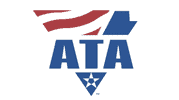In today’s ever-changing world, international relocations are becoming more common as companies expand into new markets and embrace global talent. While moving to a new country can be an exciting opportunity for employees, it also comes with challenges. From navigating complex regulations to ensuring your team members feel supported, thoughtful planning is vital to making the relocation experience smooth and positive.
Whatever the motivation, understanding a few key aspects of international employee relocation will make this process smoother and less stressful for everyone involved.
Understanding International Laws for Employee Relocation
One of the most important steps in relocating an employee is understanding the destination country’s employment, tax, and immigration laws. Each country has unique requirements that may affect your employees’ experience, and following them is critical to avoid potential legal issues.
Healthcare benefits and coverage may also vary from country to country, so researching healthcare options ahead of time is often beneficial to ensure your employee’s needs are met. Additionally, most countries require a visa or work permit for foreign employees. Whether it’s your responsibility or the employee’s, stay aligned on these requirements and keep records of all necessary documents for future reference.
Supporting Your Employee Throughout Relocation
Supporting your employee during their move can make all the difference. Start by understanding their goals and how relocation fits into them. Communication is essential if time zones vary. For instance, if your company is U.S.-based and your employee is relocating to a different hemisphere, adjusting to new working hours and planning regular check-ins will be essential.
Setting up reliable communication channels and establishing meeting times is helpful. If multiple team members or your entire office is making the move, create a supportive network to help them feel connected and engaged.
Depending on the relocation terms, you might also consider offering additional support, such as a relocation package, travel assistance, or temporary housing accommodations. Most importantly, extend patience and flexibility as your employee adjusts to a new culture, lifestyle, and location.
Short vs. Long-Term Relocation
The short—or long—term relocation period plays a role in planning for the move. Short-term relocation typically has a set end date, meaning your employee will return after a specific period. While support is still essential, preparing for their return is also important.
Long-term relocation, on the other hand, usually doesn’t have a fixed end date. Residency laws for short- and long-term relocations can differ, so ensure you know the rules based on each employee’s situation.
Relocating internationally is a significant step for any employee; the proper support can make all the difference. By fostering open communication, understanding legal requirements, and offering assistance, companies can help their employees thrive in new environments. Not only does this enhance employee satisfaction, but it also strengthens the organization’s global presence and resilience. Embracing the relocation journey together sets the foundation for a thriving, interconnected team.








